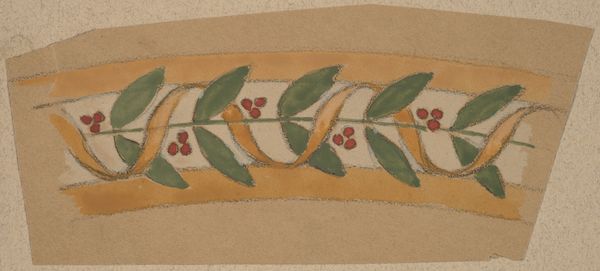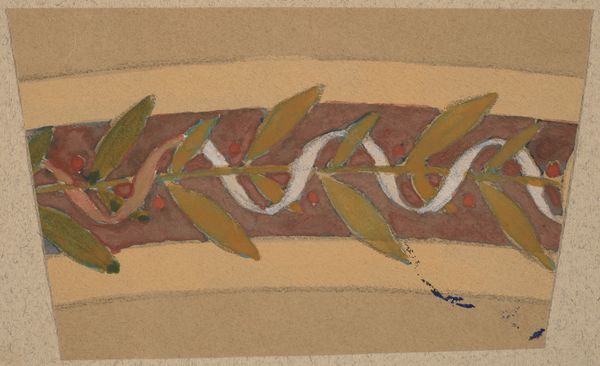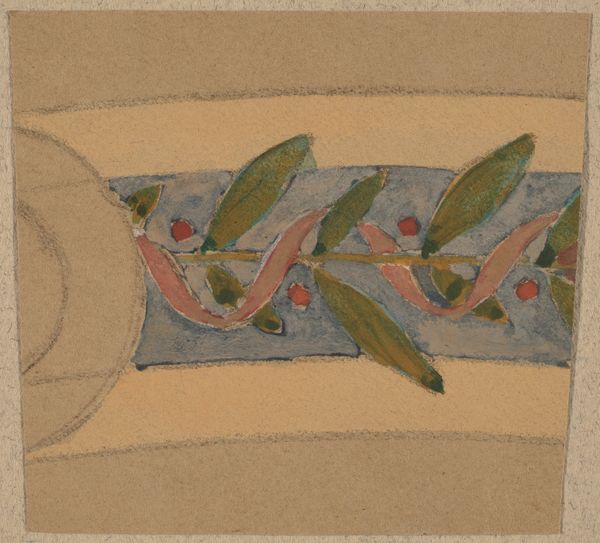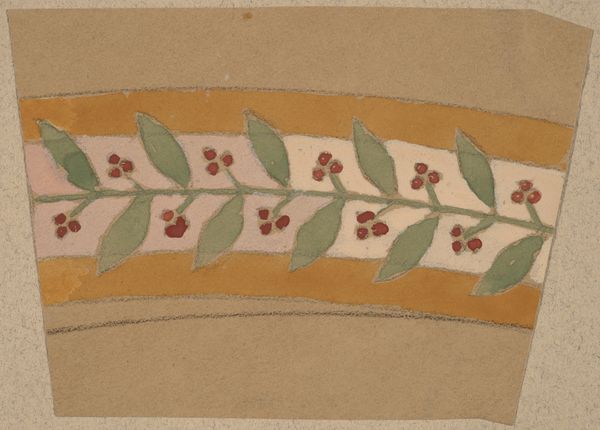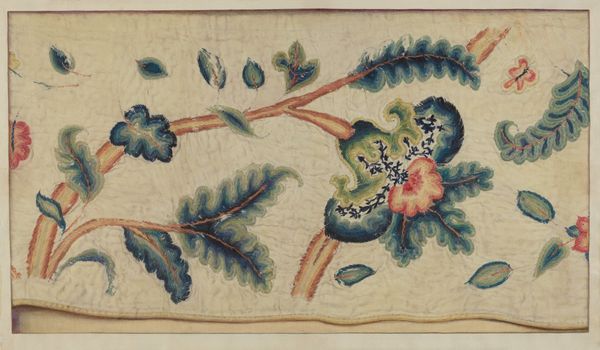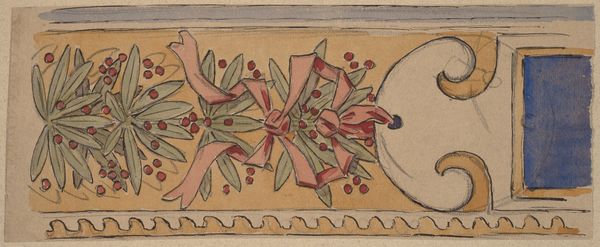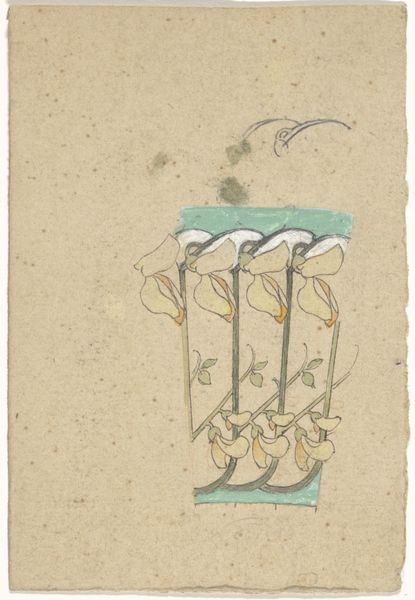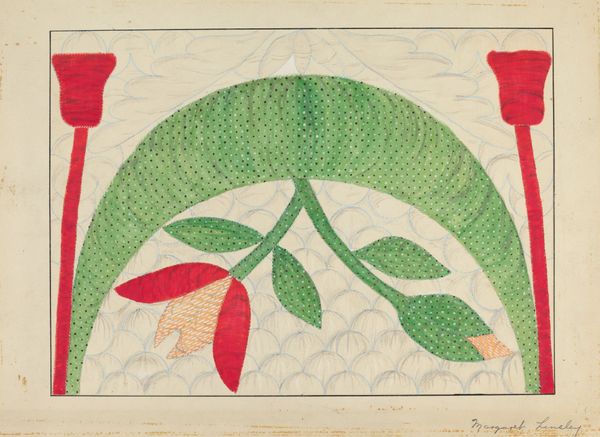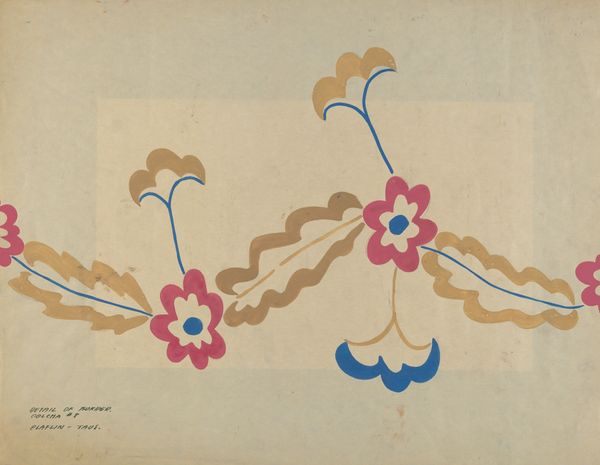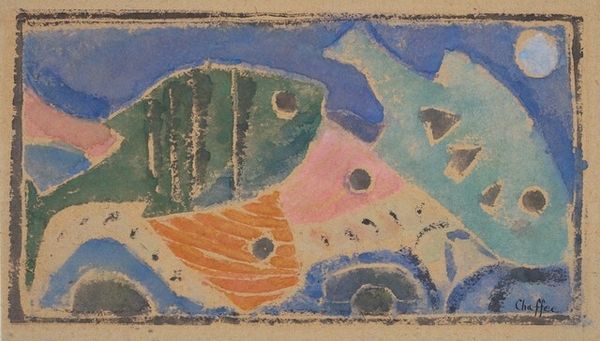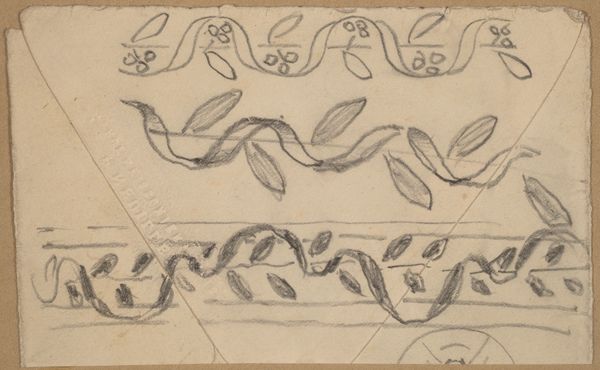
Dimensions: sheet (irregular): 4.2 × 8.7 cm (1 5/8 × 3 7/16 in.) mount: 30.2 × 46.3 cm (11 7/8 × 18 1/4 in.)
Copyright: National Gallery of Art: CC0 1.0
Curator: Charles Sprague Pearce created this watercolour, creatively titled "Study for a Border Design," sometime between 1890 and 1897. What catches your eye about it? Editor: It's incredibly delicate! The colours are so soft, and the geometric repetition is calming. I wonder what sort of 'border' Pearce was envisioning? Curator: Considering the date, and Pearce’s involvement with mural painting, I’d bet he intended this design for architectural embellishment—likely within a domestic interior or perhaps a public building seeking classical legitimacy. Editor: That contextual detail alters how I view the materials used here. It's watercolour, on paper—so light and portable for designing, but inherently reproducible for translating onto another medium—like fresco painting perhaps? How readily could Pearce communicate his aesthetic via this technology and medium? Curator: Well, watercolour allowed him a fluidity and speed, experimenting with combinations. This ties into his academic training; yet his impressionist style here feels almost like sketching. I mean, the availability and cost of paper facilitated such design explorations for those with artistic aspirations. Editor: Right! The material constraints and affordable price point likely made iterative sketching the mode through which one gained prominence. Beyond process, the social dimension fascinates me too. I suppose this could exist within a much larger cultural system; something perhaps hinting at peace or some other civic or domestic virtue. Curator: Absolutely, the olive branch design carries heavy symbolic weight, dating back millennia! What does it mean when this classically-inspired element appears in an American home or public building? Are these intended to communicate wealth or knowledge, virtue, or some new brand of cultural power? Editor: Exactly, we have to think about the politics embedded in something as ostensibly neutral as a border design. All such visual forms ultimately circulate back into a specific socio-political economy. This is, to me, how something as subtle as a painted branch becomes meaningful. Curator: A beautifully made, politically charged object, using everyday and affordable materials. Quite the potent combination, wouldn’t you say? Editor: Precisely! Thinking about the artist’s hand shaping social narratives, material by material...it does get the mind moving.
Comments
No comments
Be the first to comment and join the conversation on the ultimate creative platform.
